The Tarptent Notch Li is a single-person, double-wall ultralight tent made with Dyneema (DCF) weighing only 20 oz. A dual apex shelter, it has two doors, two vestibules, and requires two trekking poles to pitch. It’s a great shelter for exposed terrain and dense forest, with excellent stability in higher windspeeds and a small footprint to fit into small tent spaces. A less expensive version, the Tarptent Notch, is also available, which only weighs about 7 ounces more and is less than half the price. I’ve owned both models and can recommend them.
- Weight: 20 oz (fly, inner, guylines, struts)
- Persons: 1
- Type: Double-wall
- Poles: Trekking Pole Tent (2 poles) – 107-115cm required
- Material: Dyneema (DCF)
- Seam-Taped: yes
- Doors and Vestibules: 2/2
- Minimum Number of Stakes to Pitch: 4 (6 recommended)
- Dimensions: 43″ (h) x 20-34″ (w) x 84″ (l)
- Packed size: 16 in x 4 in / 41 cm x 10 cm
- Pros: Ultralight, Wind worthy, Fits into small spaces, Inner tent stays dry in rain
- Cons: Cramped interior (recommended for hikers up to 6’2″ in height)
The Notch Li’s dual-apex design provides more usable internal space than a pyramid tarp with a center pole. It also means you have two vestibules and two doors, which are handy on a one-person tent because they provide lots of covered gear storage and can be used on either side as a door.
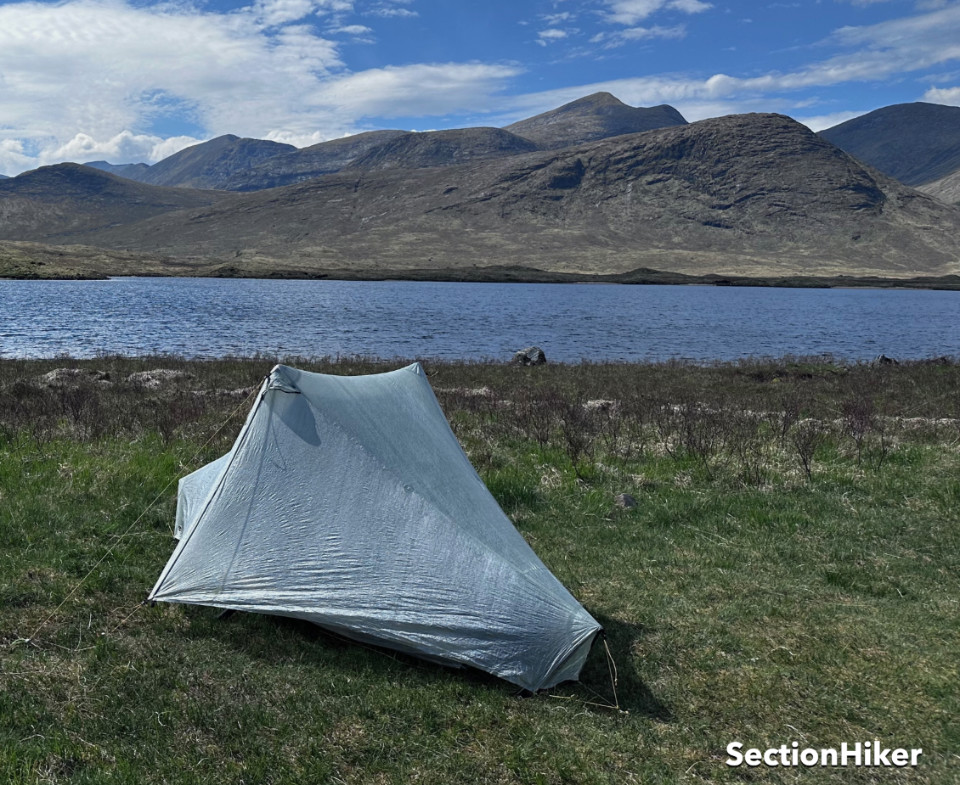
While the ends are sloped, they’re supported by tripods, raising the ceiling so you have more room overhead and “overfoot” without requiring a longer tent. The tripods are created by two carbon fiber struts connected by guyline cord and line-loc adjusters and require just one stake to secure. The struts are removable for packing if you want to make the tent smaller when packed – though rolling rather than stuffing the Dyneema is still recommended.
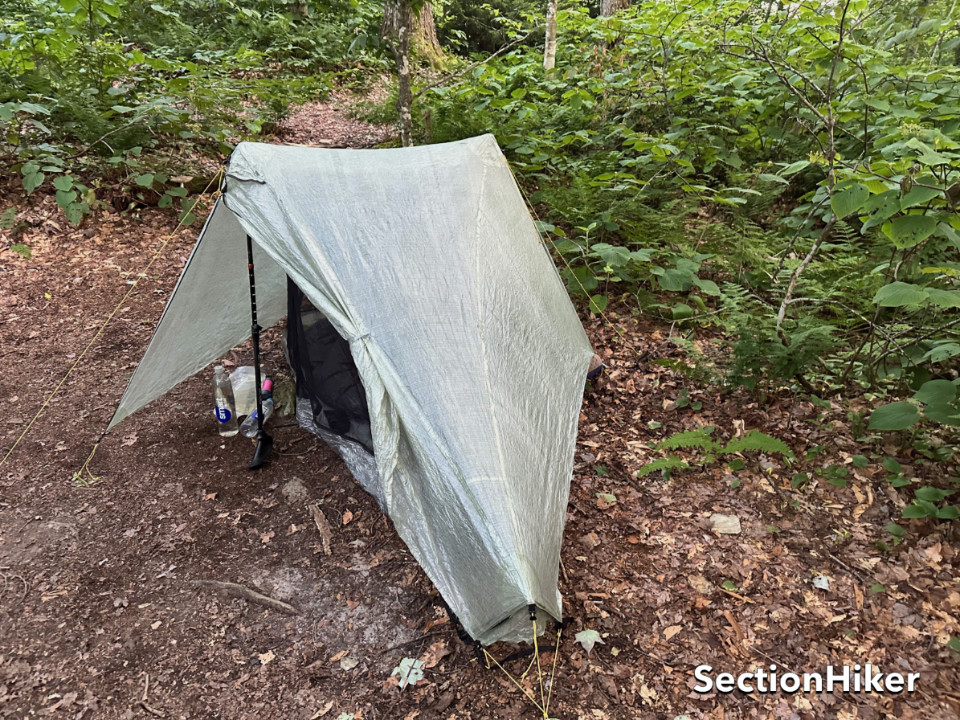
The Notch Li is a double-wall tent with an inner net tent w/ bathtub floor and an exterior rainfly. The inner tent is suspended below the rainfly with mitten hooks so you can set the two together in the rain while keeping the inner tent dry. Alternatively, you can separate the fly and the inner tent and use them independently as a tarp shelter minus an inner tent or as a bug bivy in dry weather.
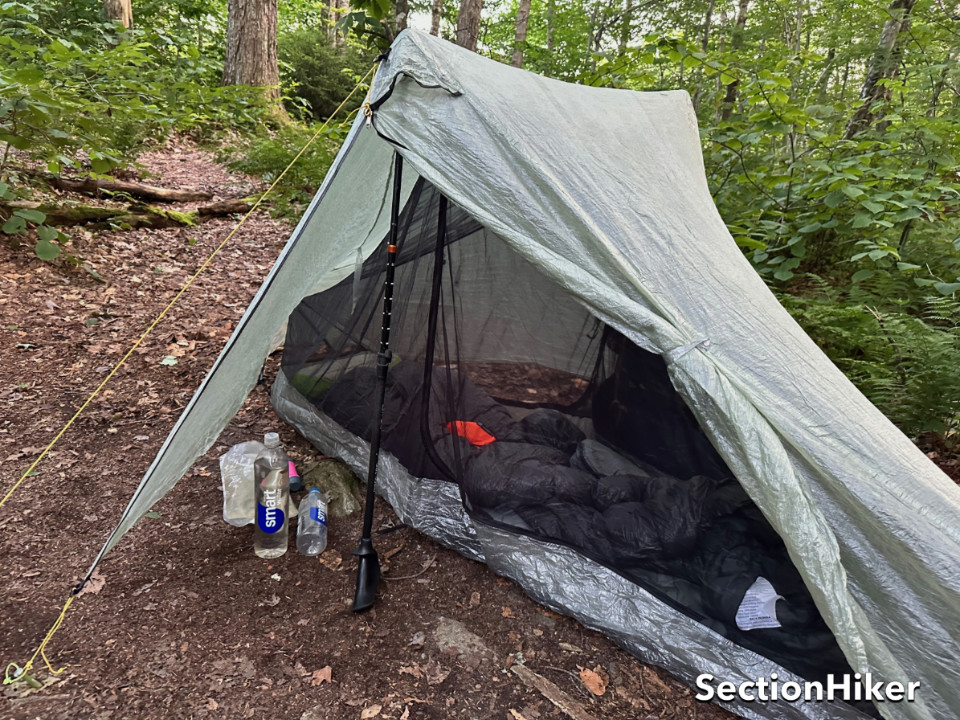
In good weather, the vestibule doors can be rolled back and secured with magnetic keeper toggles for added ventilation. Line-loc adjusters at the peaks allow you to roll back both doors for maximum ventilation on one or both sides of the tent. You can also regulate the airflow by pitching the fly higher, so there is more space between the ground and the bottom of the fly, or lower, so the fly bottom is flush with the ground. The latter is helpful in storm mode and heavy rain, so it doesn’t splash back under the fly into your living space.
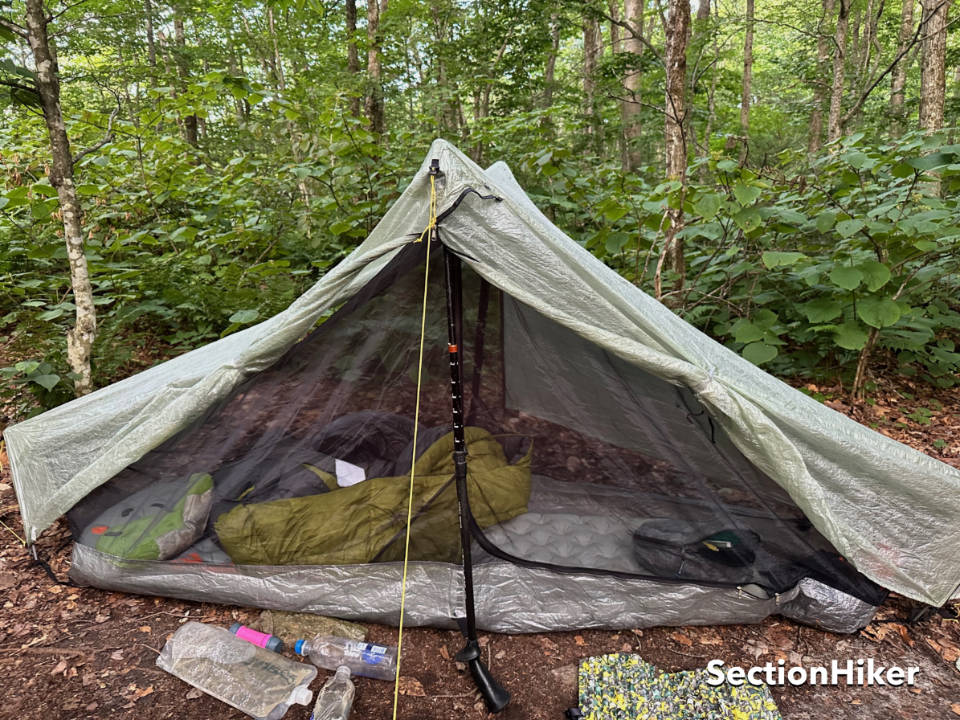
The inner tent is diamond-shaped with 20″ of width at the ends, 34″ in the middle, and 84″ in length. While it can fit a 20″ inflatable pad, there isn’t much storage space inside the tent for wet clothing except at the ends. There are two pockets on the side doors at the top of the bathtub floor, but they’re small, and a Smartphone falls out where it can get crushed if it slides under your sleeping pad. If you have glasses, they can be looped through hooks in the peaks. This is the tradeoff for a tent that can fit into tight pitches in dense forest.
The compact shape and strength of the Notch Li also make it quite windworthy, provided you use longer 8″ stakes and stake out the peaks. I recently took this tent to Scotland instead of the Durston X-Mid Pro 1 after comparing their wind performance in the spring, and the smaller side panels and lower height on the Notch Li make a big difference in stability and ease of setup.
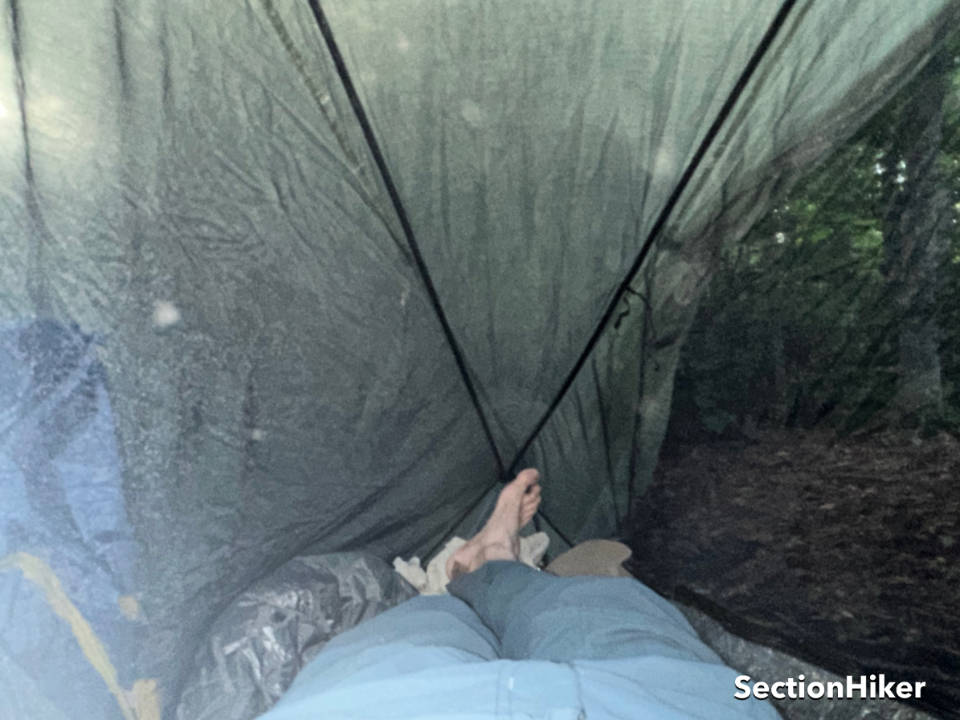
Set up
The Notch is easy to pitch once you practice it a few times and get the hang of it. The first thing to do is to lay the fly out on the ground in a diamond shape. Next, stake out the four corners: the two end tripods and the guy lines at the base of the vestibule zippers. Then raise the side of each vestibule and slip the tip of a trekking pole into the grommet in the apex. Repeat for the second side, walk around the fly and tighten the guy lines.
Comparable Trekking Pole Tents
Recommendation
The Tarptent Notch Li is an ultralight, one-person double-wall trekking pole tent made with Dyneema that weighs just 20 oz. It can be pitched as a single integrated unit, keeping the inner tent dry in rain. While the interior is somewhat cramped, it is easy to set up in dense forests where tent sites are small and quite stable in windy, exposed terrain. Its large side vestibules provide ample storage and excellent airflow.
SectionHiker is reader-supported. We only make money if you purchase a product through our affiliate links. Help us continue to test and write unsponsored and independent gear reviews, beginner FAQs, and free hiking guides.
